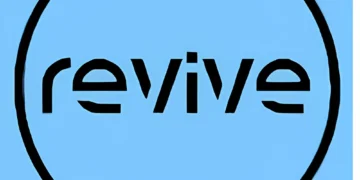Extreme weather events such as hurricanes, earthquakes, floods, and wildfires pose serious threats to power and communication networks. Cable systems play a critical role in disaster resilience by ensuring the continuous flow of electricity and data even in harsh conditions.
To improve disaster preparedness, modern cable designs incorporate high-strength materials, water-resistant insulation, and fireproof coatings. Companies like Ducab are developing innovative, durable cable solutions that enhance the reliability of power grids and industrial networks in the face of natural calamities.
1. Challenges Faced by Cable Systems During Natural Disasters
Cables and electrical infrastructure are vulnerable to severe weather conditions and geological disturbances, which can lead to:
- Power Outages and Grid Failures: Strong winds, floods, and earthquakes can damage overhead and underground cables, causing widespread blackouts.
- Physical Damage from High Impact Forces: Fallen trees, debris, and heavy water currents can snap, bend, or crush cable systems.
- Heat and Fire Exposure: Wildfires and extreme heat waves can melt insulation and ignite electrical components.
- Water and Corrosion Damage: Prolonged exposure to moisture and saltwater can cause insulation failure and electrical shorts.
These challenges make it essential to design resilient cable systems that can endure harsh environments without compromising performance.
2. Designing Hurricane-Resistant Cable Systems
Hurricanes bring strong winds, heavy rainfall, and storm surges, which can devastate power grids and telecommunications networks.
a) Reinforced Overhead Cables
- High-strength aluminum alloy conductors prevent breakage under extreme wind loads.
- Advanced polymer coatings protect against corrosion and mechanical stress.
- Spiral-wrapped insulation layers reduce ice accumulation and wind-induced movement.
b) Underground Power Distribution
- Buried cable networks minimize exposure to wind and falling debris.
- Moisture-resistant sheathing prevents water intrusion and electrical failures.
- Smart grid technology helps reroute power in case of localized outages.
By integrating storm-resistant materials and underground installations, cable systems can remain operational during hurricanes.
3. Earthquake-Resistant Cable Design
Seismic activity can cause severe ground movement, structural collapses, and infrastructure damage. Cable systems must be designed to absorb shock and maintain integrity in the event of an earthquake.
a) Flexible and Shock-Absorbing Cables
- Seismic-resistant cable trays and mounting systems allow movement without damage.
- Elastomeric insulation materials absorb mechanical stress and reduce fracture risks.
- Multi-stranded conductors offer better flexibility and resistance to tension.
b) Underground Seismic-Proof Installations
- Cables in earthquake-prone areas are installed in flexible conduit systems that allow expansion and contraction.
- Shock-absorbing materials are placed around underground cables to reduce breakage risk.
- AI-based monitoring systems detect early seismic activity and enable automatic power rerouting.
These innovations ensure that power and data networks remain functional even during earthquakes.
4. Fireproof and Heat-Resistant Cable Solutions
Wildfires and extreme heat conditions can compromise electrical systems, leading to widespread network failures and safety hazards.
a) Fire-Resistant Cable Insulation
- Low Smoke Zero Halogen (LSZH) insulation minimizes toxic gas emissions.
- Ceramic-coated fire-resistant cables maintain power transmission even in direct flames.
- Flame-retardant compounds prevent the spread of electrical fires.
b) High-Temperature Conductors
- Nickel and stainless-steel coated conductors withstand extreme heat without losing conductivity.
- Advanced polymer insulation maintains structural integrity under prolonged exposure to fire.
Fire-resistant cables enhance safety and reliability, particularly in wildfire-prone regions.
5. Floodproof and Water-Resistant Cables
Flooding can cause water intrusion, insulation breakdown, and electrical shorts in power and communication cables.
a) Water-Blocking Cable Designs
- Waterproof sheathing and gel-filled cores prevent moisture ingress.
- Self-sealing insulation layers close small cracks and prevent internal corrosion.
- Hydrophobic coatings repel water and enhance cable longevity.
b) Elevated and Submersible Cable Installations
- Submarine cables with high-pressure sealing withstand deep-sea environments.
- Elevated power lines prevent exposure to rising floodwaters in urban areas.
- Underground drainage systems protect buried cables from prolonged water exposure.
Flood-resistant cable solutions ensure uninterrupted power supply in flood-prone areas.
6. Smart Grid Technologies for Disaster Preparedness
Beyond physical cable improvements, smart grid technologies enhance the resilience of power networks.
a) AI-Driven Predictive Maintenance
- Real-time monitoring sensors detect potential weak points in cable systems.
- AI analyzes weather data and forecasts potential system failures before they occur.
b) Automated Power Rerouting
- Self-healing grids automatically reroute electricity to minimize outages.
- Remote-controlled switches allow quick power restoration in affected areas.
c) Renewable Energy Integration
- Microgrid solutions provide localized power supply, reducing dependency on centralized grids.
- Battery storage systems offer backup energy during emergencies.
These smart energy solutions improve disaster recovery and enhance infrastructure resilience.
7. Ducab’s Commitment to Disaster-Resistant Cable Technology
As a leader in advanced cable manufacturing, Ducab Sustainability focuses on:
- Developing high-performance, disaster-resistant cable solutions.
- Investing in research for fireproof, floodproof, and earthquake-resistant materials.
- Integrating AI-driven predictive maintenance for long-term reliability.
These innovations align with global safety standards, ensuring cable durability and resilience in extreme conditions.
8. The Future of Disaster-Resilient Cable Systems
With climate change increasing the frequency and severity of natural disasters, the future of cable system design will focus on:
- Self-repairing and self-healing cable materials to minimize maintenance needs.
- AI-powered disaster prediction models for preemptive power grid adjustments.
- Ultra-lightweight, high-strength conductors for improved structural integrity.
- Eco-friendly, biodegradable insulation materials for reduced environmental impact.
By adopting these advancements, manufacturers can ensure uninterrupted power supply and robust infrastructure resilience.
Conclusion:
Designing disaster-resistant cable systems is essential for ensuring power reliability, reducing economic losses, and enhancing public safety. Through high-strength materials, water-resistant insulation, fireproof coatings, and smart grid technologies, cable networks can withstand hurricanes, earthquakes, floods, and wildfires.
Companies like Ducab are at the forefront of developing innovative cable solutions, ensuring that critical infrastructure remains operational even in extreme conditions. As technology continues to evolve, resilient cable systems will play a crucial role in global disaster preparedness.
FAQs: Disaster-Resistant Cable Systems
1. How can cables be designed to withstand hurricanes?
Hurricane-resistant cables use reinforced conductors, polymer coatings, and underground installations to prevent wind damage and power outages.
2. What materials make cables fire-resistant?
Low Smoke Zero Halogen (LSZH) insulation, ceramic coatings, and flame-retardant compounds improve fire resistance.
3. How do earthquake-resistant cables prevent failures?
They feature flexible, shock-absorbing insulation and seismic-resistant conduit systems to withstand ground movement.
4. What role do smart grids play in disaster recovery?
Smart grids use AI-driven predictive maintenance and automated rerouting to restore power faster.
5. How is Ducab contributing to disaster-resistant cable solutions?
Ducab integrates advanced materials, smart grid technologies, and sustainability practices to develop high-performance cables for extreme conditions.















































